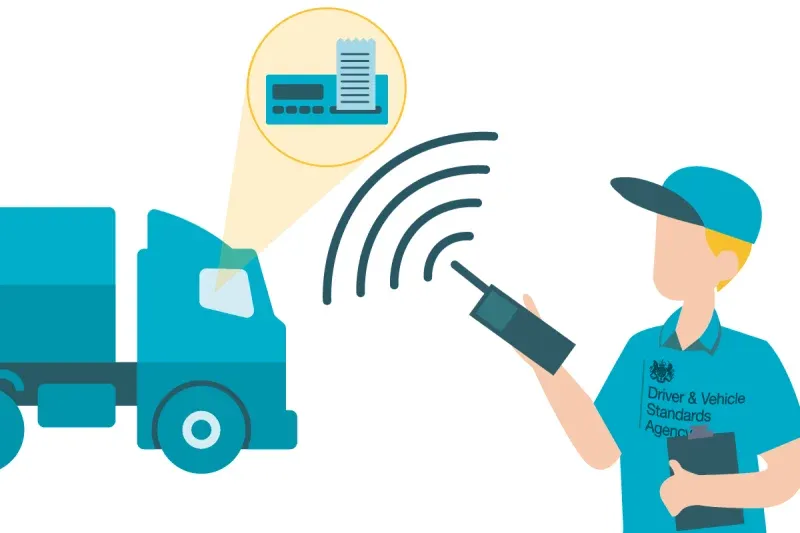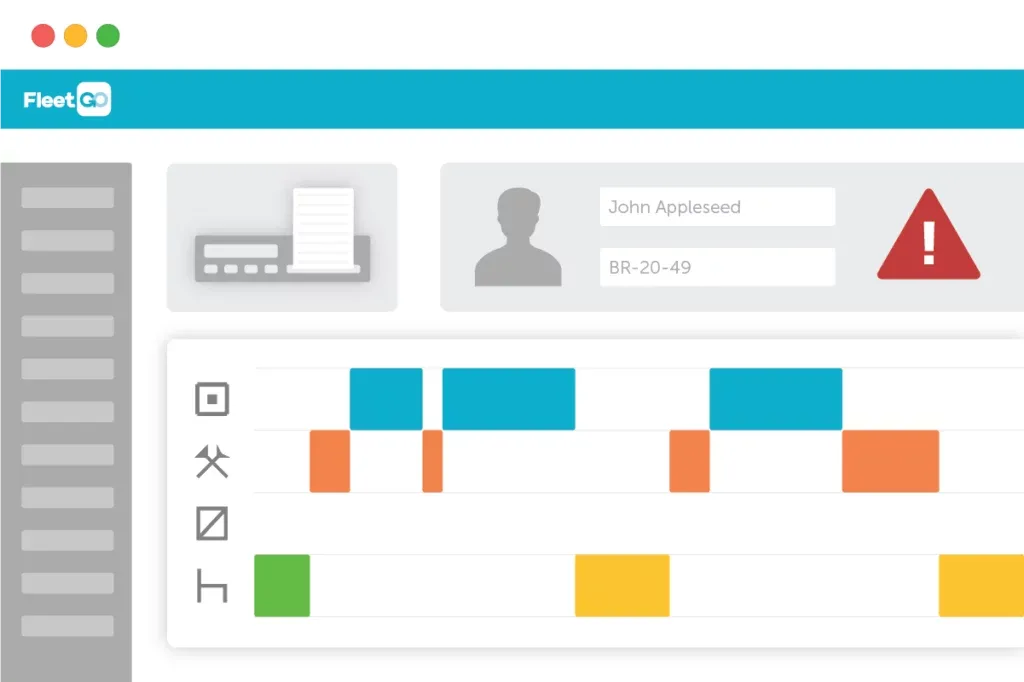DVSA remote roadside checks are set to be used more widely over the coming years. By 2025, firms operating internationally, will have to use the latest version of the Tacho to make it possible for the agency to monitor vehicles moving on the road. This will make it a lot harder for drivers and firms to get away with Tacho violations. Some of the details these devices will track include Tachograph manipulations like adding false entries with the intention to deceive.
These roadside checks are likely to attract fines going up to thousands of pounds. Read on to learn more about DVSA remote roadside checks and how they’re likely to affect you.
Never risk any tachograph fines again!
Get started with analysing your tacho files with the FleetGO all-in-one tacho solution. Never miss an infringement again!
Chances of being inspected are higher
than ever!
How Does the DVSA Use DSRC to Check Vehicles Remotely?
The DVSA is still testing out this technology to see how best it can be used to keep Britain road users safe. With the DSRC, the authorities will be able to detect tachograph violations remotely. If a vehicle doesn’t have any violation, its details will only be stored for less than 3 hours. But any details pointing to the manipulation or misuse of the tachograph will be stored for longer.
It’s worth noting that DSRC technology has been in use previously. But the new system is meant to work with tachographs to help identify law-breakers on the road. It does this by collecting essential details on the vehicle.
Smart Tacho 2 Mandatory from August 2025
The Smart Tacho 2 is the latest tachograph, and countries around the European Union are making it mandatory for heavy vehicles that are operating internationally by August 2025. But any firm operating internationally, that intends to register commercial vehicles from 21, August 2023 will have to equip their vehicles with the Smart Tacho 2. That said, it is clear that there will be material delays that will make it impossible for all new vehicles to get the tachograph on time. This is why several countries have added grace periods for vehicles to get it.
The RTSE (Remote Tachograph Sensing Equipment) is meant to enhance road safety, so any firm that doesn’t have up-to-date tachographs will face penalties.
Which Tacho Infringements Can be Checked Remotely with RTSE?
RTSE technology can be used to check a number of Tacho infringements. Infringements and data that can be checked with RTSE technology are:
- The vehicle motion conflict:
whenever data from the vehicle speed sensor differences too much with that from the GNSS (Global Navigation Satellite System) module;
- The speed of the vehicle
- The motion data error:
when inaccuracies or issues in recording a vehicle’s movement take place, which can effect the reliability of the information logged by the tachograph;
- Sensor faults
- The latest registered security breach
- The tachograph calibration data
- Tampering with the tachograph card
Other details it collects include:
- The length of the power supply interruption
- Whether or not the tachograph card is inserted during the drive
- Any security breach attempt in the recent past
- Whether or not you’re driving with a valid card
- Time adjustment data
It’s important to note that the new RTSE is only meant to identify serious criminals. It doesn’t collect data on the typical driver offences. For example, it can’t determine whether you’ve taken the required break between drives. It also can’t tell if you’ve exceeded your daily driving hours.
In most cases, the data isn’t retained for more than 3 hours (usually for the duration of the roadside check). But if it shows that you’ve misused the tachograph, it can be held for longer.
FAQ
DVSA stands for the Driver and Vehicle Standards Agency. This body sets and enforces the standards for driving and vehicle safety on UK roads. Some of the responsibilities of the DVSA include testing vehicles, carrying out driving tests, carrying out educational programs to promote road safety, and implementing driving regulations.
Infringements on EU tachograph regulations can result in fines, although many cases only attract warnings. In the worst cases, the drivers can even get prison time. These rules are meant to prevent drivers from working for too long, and they ensure that the drivers get reasonable breaks between shifts.
The Smart Tacho 2 is the latest smart tachograph to be released. This remote sensing device is able to pull data from vehicles as they move. Some of the details it collects include the vehicle motion conflict: whenever data from the vehicle speed sensor differences too much with that from the GNSS (Global Navigation Satellite System) module; sensor faults, the length of power supply interruptions, and the speed of the vehicle.
Tacho infringements don’t have a time limit. The offences can be investigated for up to 6 months and will usually attract heavy fines. However, the highest level of infringements will result in imprisonment of up to 2 years.
To see your Tacho infringements, you will have to get the print out. This shows you the overall rest, drive time, and infringements. It’s also possible to use the iOS app to see your Tacho infringements and other details on your drive.
DSRC stands for dedicated short-range communications and is a technology that allows vehicles to communicate with roadside infrastructure. It is commonly used to collect information on the speed and position of a truck to prevent road accidents. The technology also helps to control traffic.
This is a program set up to identify and reward operators who have indicated that they’re committed to road safety and compliance. Operators participating in the program have to continuously provide data on their drivers and vehicles to the DVSA. Such vehicles will have fewer inspections.




